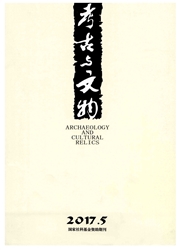

 中文摘要:
中文摘要:
本文对甘肃民乐东灰山遗址四坝文化时期的剖面采集的系列样品进行浮选所获得的炭化植物种子和麦类作物穗轴进行鉴定、统计和分析,结果表明,炭化种子以谷物类为主,各类谷物的比例和出土概率反映东灰山遗址四坝时期的农业经济,是经营以粟为主黍为次的小米类农业,小麦、大麦和裸大麦被普遍使用,以大麦和裸大麦为主的麦类作物,是当地旱作农业的补充。大量炭化裸大麦遗存的发现,为认识麦类作物种子的分类提供了很好的实物材料。与周边遗址的比较分析,我们发现河西走廊地区作为麦类作物传播的重要通道,外来的麦类作物并未取代小米类作物,仅为当地小米类农业的补充。
 英文摘要:
英文摘要:
This article presents results of flotation samples taken from the Siba culture horizons at the Donghuishan Site in Minle County, Gansu Province. Identification and statistical analysis on the abundant carbonized seeds and rachis show that there is a high ubiquity of foxtail millet (Setaria italica) along with broomcorn millet (Panicum miliaceum), pointing to the importance of these two crops in the subsistence, while other crops are in small quantities as a supplement, including wheat (Triticum aestivum) and mainly on barley (Horduem vulgare) and naked barley (Horduem vulgare var. nudum). In addition, the naked barley was identified for the first time in Hexi-Corridor. Combined data with surrounding areas show that the Hexi Corridor played an important role in the introduction of wheat and barley to China but it is important to note that millets have been the most important crops in this region.
 同期刊论文项目
同期刊论文项目
 同项目期刊论文
同项目期刊论文
 期刊信息
期刊信息
